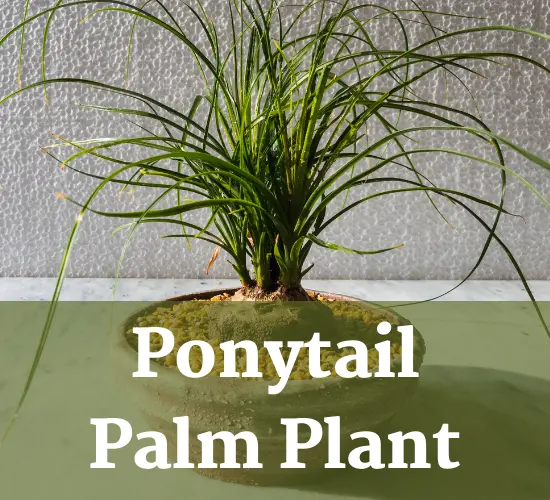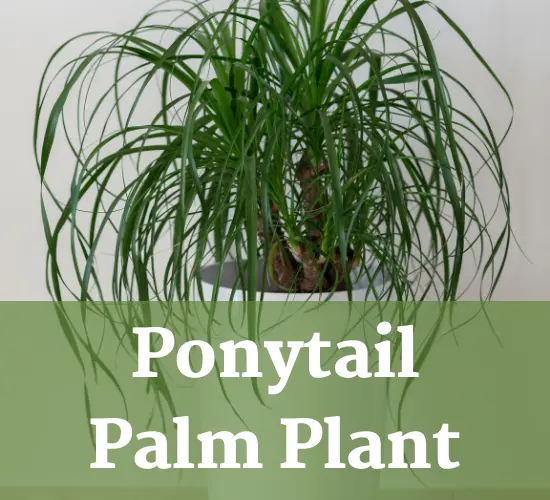Table of Contents
Ponytail Palm Easy To Care
The Ponytail Palm, also known as Beaucarnea Recurvata, is a remarkable plant that offers the perfect combination of elegance and low-maintenance care.
This adaptable plant is an ideal choice for individuals who lead busy lives and have limited time to devote to plant care. Whether you are a frequent traveler or simply have a hectic schedule, the Ponytail Palm is a resilient and drought-tolerant plant that requires minimal attention.
With its stunning appearance and ability to thrive in various environments, the Ponytail Palm is a popular choice for both homes and offices. Its non-toxic nature makes it safe for households with children and pets, providing peace of mind for those concerned about the well-being of their loved ones. Additionally, the Ponytail Palm can be easily maintained by trimming its leaves to ensure it retains its desired appearance.
By following a few simple care tips, such as watering every couple of weeks and allowing the soil to dry completely between waterings, you can enjoy the beauty of the Ponytail Palm without the hassle of constant upkeep. Whether placed in bright indirect light or exposed to full sun, this plant will thrive and add a touch of elegance to any space.
Embrace the freedom of low-maintenance plant care with the Ponytail Palm – your perfect companion for easy care elegance.
Key Takeaways

- Ponytail Palm is a low-maintenance plant that requires minimal care.
- It is adaptable and can thrive in various environments.
- The plant is drought-tolerant and only needs to be watered every couple of weeks.
- Ponytail Palm is well-adapted to arid and semi-arid environments.
What is it?
The Ponytail Palm (Beaucarnea Recurvata) also known as elephant’s foot is a member of the Asparagaceae family and native to the southeastern desert of Mexico, is a low-maintenance and adaptable plant that thrives in bright indirect light to full sun and requires minimal care. This plant offers numerous benefits to its owners, making it an ideal choice for those seeking an easy-care companion.
One of its main advantages is its ability to tolerate drought, making it perfect for individuals with busy schedules or those who frequently travel. The Ponytail Palm only needs to be watered every couple of weeks, and it prefers to have its soil completely dry between waterings. This low water requirement not only saves time but also reduces the risk of overwatering, which can be detrimental to many other houseplants.
In addition to its water efficiency, the Ponytail Palm is also highly adaptable to different environments. It thrives in a wide range of temperatures, preferring normal room temperatures between 60-80 degrees Fahrenheit. This adaptability allows the plant to be placed in various areas of the home, from living rooms to bedrooms, without the need for complex temperature control.
Moreover, the Ponytail Palm can handle different levels of sunlight, ranging from bright indirect light to full sun. This versatility makes it a suitable choice for homes with different lighting conditions, ensuring that it can be enjoyed by a wide range of individuals.
Overall, the Ponytail Palm’s ability to thrive in various conditions and its minimal care requirements make it an excellent choice for those seeking an easy-care and elegant plant companion.
Care Tips

Adaptable to various environments and requiring minimal attention, the Ponytail Palm is a resilient plant that thrives with infrequent watering and bright, indirect light.
This low-maintenance companion is perfect for individuals with busy schedules or those who frequently travel. To ensure the health and vitality of the Ponytail Palm, it is important to establish a proper watering schedule. Watering every couple of weeks is sufficient, allowing the soil to completely dry out between waterings. Overwatering can lead to root rot and other issues, so it is crucial to exercise caution and avoid excessive moisture.
In addition to its water requirements, the Ponytail Palm also has specific sunlight needs. It thrives in bright indirect light to full sun, making it an ideal choice for rooms with ample natural light. Placing the plant near a south-facing window or providing it with artificial light can help meet its sunlight requirements. It is important to note that while the Ponytail Palm can tolerate lower light conditions, it may not grow as vigorously or thrive as well.
By providing the plant with the right amount of water and ensuring it receives adequate sunlight, the Ponytail Palm will continue to add a touch of elegance and beauty to any space.
Native Habitat
Native to the southeastern desert of Mexico, the Ponytail Palm belongs to the Asparagaceae family and thrives in arid and semi-arid environments. This plant is well-adapted to the desert climate, where temperatures can soar during the day and drop significantly at night. The Ponytail Palm has evolved to withstand these extreme conditions by storing water in its swollen trunk, which allows it to survive during periods of drought.
Its long, slender leaves are also designed to minimize water loss, as they have a thick cuticle and a waxy coating that helps to retain moisture. Additionally, the Ponytail Palm is well-suited to the intense sunlight found in desert regions, as it can tolerate full sun or bright indirect light. Its ability to thrive in these harsh conditions makes it an ideal choice for individuals living in arid climates or those looking for a low-maintenance plant that can withstand neglect.
The adaptability of the Ponytail Palm extends beyond its ability to survive in desert environments. This plant can also tolerate a range of temperatures, making it suitable for a variety of indoor environments. It prefers normal room temperatures between 60-80 degrees Fahrenheit but can tolerate cooler temperatures down to 50 degrees Fahrenheit. This makes it a versatile choice for individuals living in different climates or those who may not have precise control over the temperature in their homes.
The Ponytail Palm’s adaptability extends to its ease of care as well. It is a low-maintenance plant that requires very little attention, making it a perfect companion for individuals who may not have the time or inclination to devote to plant care. Whether placed in a bright corner or a sunny window, the Ponytail Palm’s adaptability allows it to thrive in a wide range of environments, bringing a touch of elegance and natural beauty to any space.
Frequently Asked Questions
Can the Ponytail Palm be grown outdoors in colder climates?
Ponytail palms are not suitable for outdoor growth in colder climates. They thrive indoors, requiring bright indirect light and well-draining soil. Their adaptability and low-maintenance nature make them an ideal choice for those seeking freedom from extensive care.
How often should I repot my Ponytail Palm?
The repotting frequency for a Ponytail Palm depends on its growth rate, typically every 2-3 years. Signs of overpotting include slow growth, root-bound appearance, and roots growing out of the drainage holes.
Will the Ponytail Palm thrive in low-light conditions?
To ensure the thriving of a Ponytail Palm in low-light conditions, it is important to consider its care requirements. While Ponytail Palms prefer bright indirect light to full sun, they can tolerate low-light conditions. To optimize growth, place the plant near a window that receives some natural light. If no natural light is available, consider using artificial grow lights. It’s crucial to avoid placing the plant in a completely dark room as it may lead to stunted growth or legginess. Additionally, ensure that the plant is not overwatered, as this can result in root rot. Allow the soil to dry completely between waterings, typically every couple of weeks. By following these tips, you can successfully grow a Ponytail Palm in low-light conditions.
Are there any common pests or diseases that affect the Ponytail Palm?
Common pests and diseases that may affect the ponytail palm include mealybugs, scale insects, and root rot. Effective pest control methods include using insecticidal soap, and neem oil, and maintaining proper watering practices to prevent fungal diseases.
1 thought on “Effortless Elegance: Mastering Ponytail Palm Easy To Care”